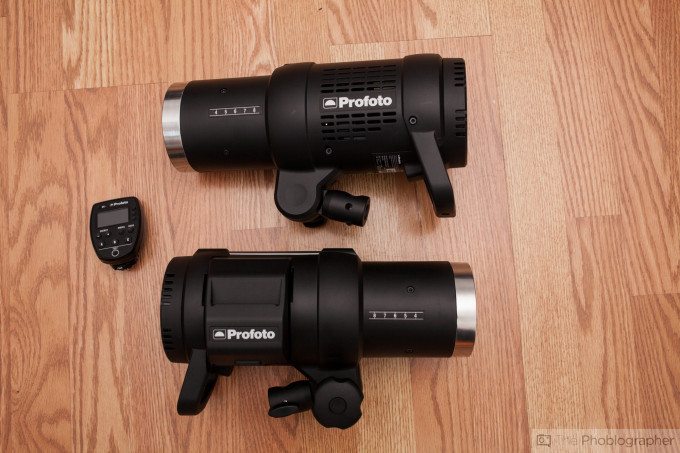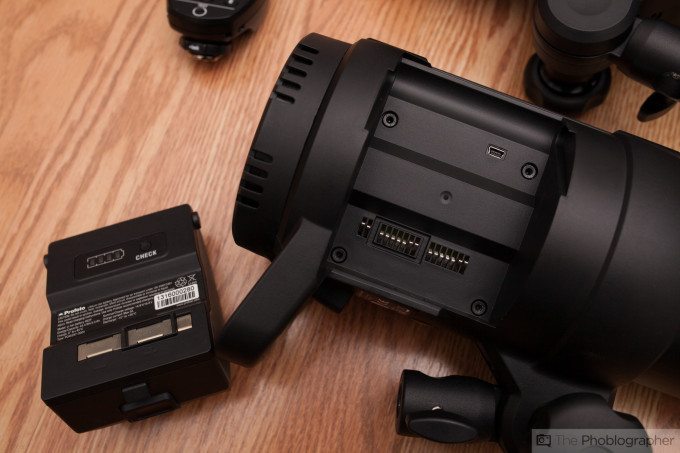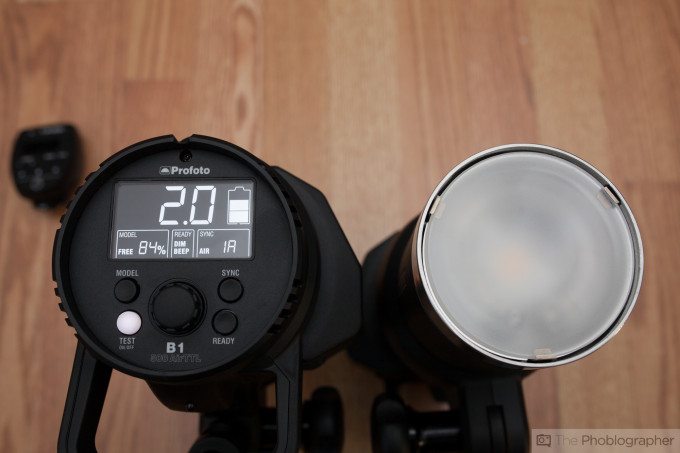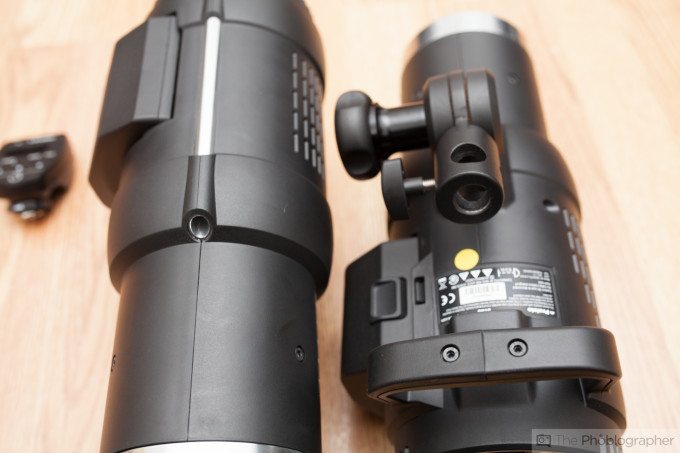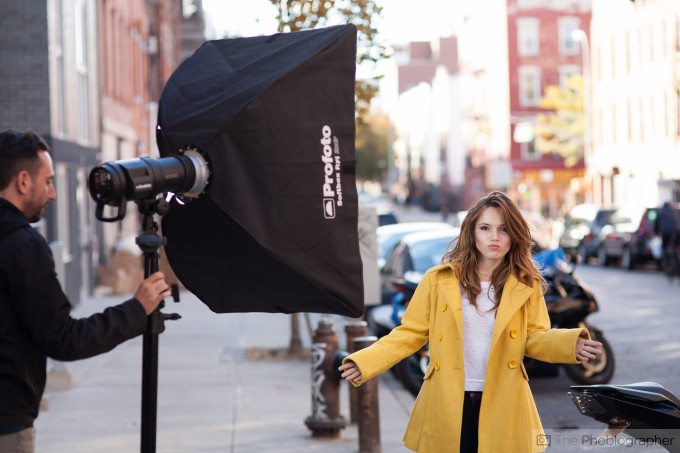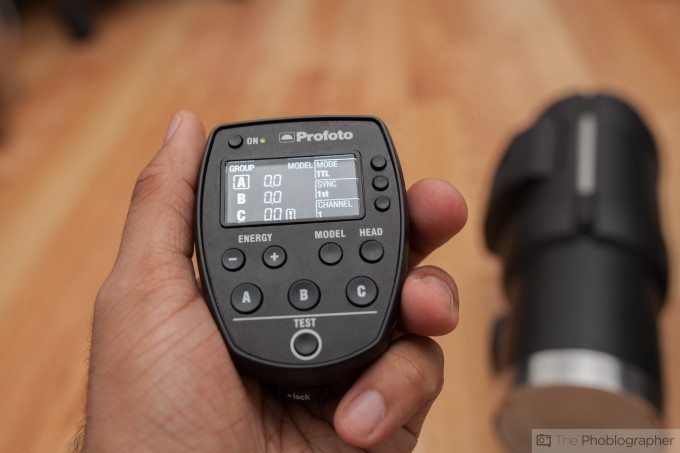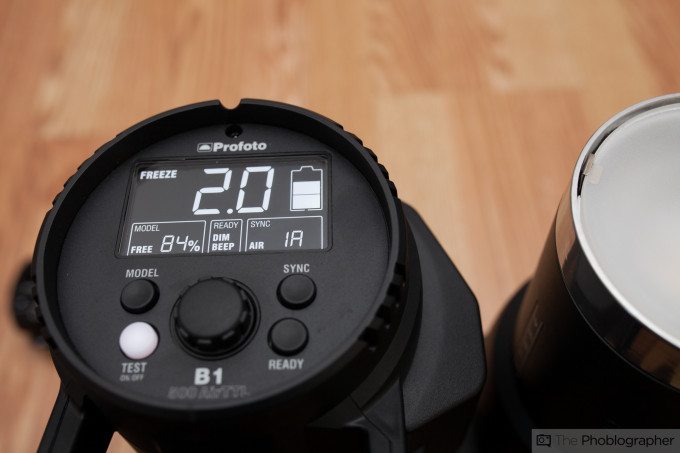Last Updated on 11/05/2013 by Chris Gampat
What more could a photographer ask for than TTL communication between your camera and your monolight? Though many of us have been lighting the old fashioned way (with a hand held light meter and measuring tools) there are times that I’m positive that all of us have wanted TTL at some point or another. Today, Profoto has announced their brand new B1 500 AirTTL Monolight along with a new commander coined the Air Remote TTL-C. As is evident from the name, it is currently only available for Canon DSLRs.
We had the opportunity to play with a pre-production unit over the past weekend and so far, it seems like a big win-win situation for all. Wedding photographers, portrait strobists, and others may really get a kick out of what this light can do. And at $2,000 per head, it may even save them money without the need of buying battery packs and all.
Gear Used
We tested two Profoto B1 500 TTL units with a Profoto RFi 2×3 softbox, a Westcott 7 foot silver interior parabolic umbrella, an Air Remote TTL-C, a Canon 5D Mk II, and a Sigma 85mm f1.4 lens.
When I met with Profoto, they weren’t sure if the TTL system would work with a Mk II, but they were positive that it worked with the Mk III. Indeed, the metering matches up flawlessly.
Tech Specs
Specifications |
|
|
Max energy |
500 Ws |
|
Energy range |
9 f-stops (2-500Ws) |
|
Energy control increments |
1/10 or full f-stops |
|
Recycling time |
0.2-1.9s (Quick burst up to 20 flashes/second) |
|
Max modeling light (W) |
20W LED (Output equivalent to 70W Halogen) |
|
Modeling light control |
Off, Proportional, Free (5-100%) |
|
Mode control |
Freeze (shortest flash duration) or Normal (color balanced) mode. |
|
Flash duration Normal Mode (t0.5) |
1/11,000s (2Ws) – 1/1000s (500W) |
|
Flash duration Freeze Mode (t0.5) |
1/19,000s (2Ws)- 1/1000s (500W) |
|
Energy stability Normal Mode |
+ – 1/20 f-stop flash to flash |
|
Energy stability Color Mode |
+ – 1/20 f-stop flash to flash |
|
Color stability Normal Mode |
+ – 150K over range; + – 20K flash to flash |
|
Color stability Freeze Mode |
+ – 800K over range; + – 50K flash to flash |
|
Guide number@ 2m, 100 ISO with Magnum Reflector |
45 2/10 |
|
Input power supply |
Exchangeable Lithium-Ion Battery 14.8V/3Ah |
|
Battery capacity |
Up to 220 full power flashes |
|
Synchronization and control |
|
|
Sync socket(s) |
1 |
|
Wire sync voltage |
Compliant to ISO 10330 standard |
|
Wire sync connector |
3.5 Mini-Phono |
|
Photocell/IR-slave and switch |
Yes |
|
Radio sync & control |
Yes, Built in AirTTL supporting wireless sync, control and TTL. (Requires Air Remote TTL. Sold separately.) |
|
Radio sync range |
Up to 300m (1,000 ft) |
|
Miscellaneous |
|
|
Function display |
Multifunction LCD display. |
|
Fan cooling |
Yes, thermally controlled fan speed for low noise level. |
|
Ready signaling |
Yes, ready lamp, dim and/or switchable beep sound. |
|
Auto dumping |
Yes |
|
USB interface |
Yes, USB mini port for FW upgrading. |
|
Quick Burst |
Quick Burst capability of up to 30 flashes per sec- ond. |
|
Measurements |
|
|
Dimensions |
31 x 14 x 21cm (12.2 x 5.5 x 8.3 inch) |
|
Weight |
3.0 kg (6.6lbs( including battery. |
|
Frequency band: |
2.4 GHz |
|
No. of frequency channels: |
8 |
|
No. of remote/TTL control groups per channel: |
3(A-C) |
|
Operation modes: |
TTL & Manual |
|
TTL camera compatibility: |
Canon E-TTL II |
|
Wireless Range: |
Normal sync up to 300 m *1ooft) Remote control and TTL sync up to 100 Meters (330 ft) |
|
Battery type: |
2xAAA (Alkaline) |
|
Typical battery lifetime: |
30 hours |
|
Antenna type: |
Integrated |
|
Auto power off: |
Yes, 30 min of inactivity |
|
Mount & Connections |
|
|
Camera mount/Sync in: |
Canon hot shoe only |
|
FW upgrade: |
USB Mini |
|
Supported Air Functionality |
|
|
Sync/Trigger: |
Yes, triggers Air Remote & Air Sync transceivers plus all Profoto flashes with AirS, Air or AirTTL support. |
|
Remote control: |
Yes, TTL group control for all Profoto flashes with Air or AirTTL support. |
|
TTL control: |
Yes, TTL group control for all Profoto flashes with AirTTL support |
|
Measurements |
|
|
Dimensions: |
75x60x35mm (2.9×2.3×1.4 inch) |
|
Weight: |
75g (2.5 oz) including batteries |
Ergonomics
Profoto’s B1 500 AirTTL is a light that incorporates the battery unit into the actual body design–which means that you’ll have no need for a larger battery pack of some sort. These batteries are detachable and can be charged via either a quick charger, normal charger, or a car charger depending on which one you specifically fancy.
In this area, you also have the option of plugging in a USB connection cord for firmware updates.
When I initially took the light out for a shoot, I thought that the battery wouldn’t be very secure. However, it stood up with no issues. The last thing that any photographer wants is a battery come crashing down on an assistant’s face.
The back is where you’ll control the entire light–that is unless you’re using the Air Remote TTL-C which we will get to in a little bit. Here you’ll find controls for the modelling light, sync type, ready button, controller knob and the test button. By pressing these, holding these, or holding these in combination with the controller knob you can access a variety of functions.
The front of the light has a frosted area that can be further protected with a cap that comes with the unit.
The top of the Profoto B1 unit is where you’ll find the light’s umbrella stand. This is where I have an major complaint about the design. While the stand/slot won’t make your umbrella rattle around, we would have liked a little tightening knob (similar to Paul C Buff’s Einstein light) on top so that an umbrella doesn’t accidentally fly out.
On the bottom of the light is the connector to a light stand and angle adjustment knob.
Build Quality
Though we’ve got a couple of qualm with the umbrella slot, we don’t have a single other major complaint about the B1 unit. The battery has held up and never fallen out and the overall build quality is really quick solid. In fact, when you pick the light up and hold it in your hands, it will ooze with elegance and you’ll know that you’re holding something that was built with precision and thought.
Ease of Use
We didn’t really see any issues with the usability. The light is in fact very straight forward if you’re used to using monolights or even speedlights.
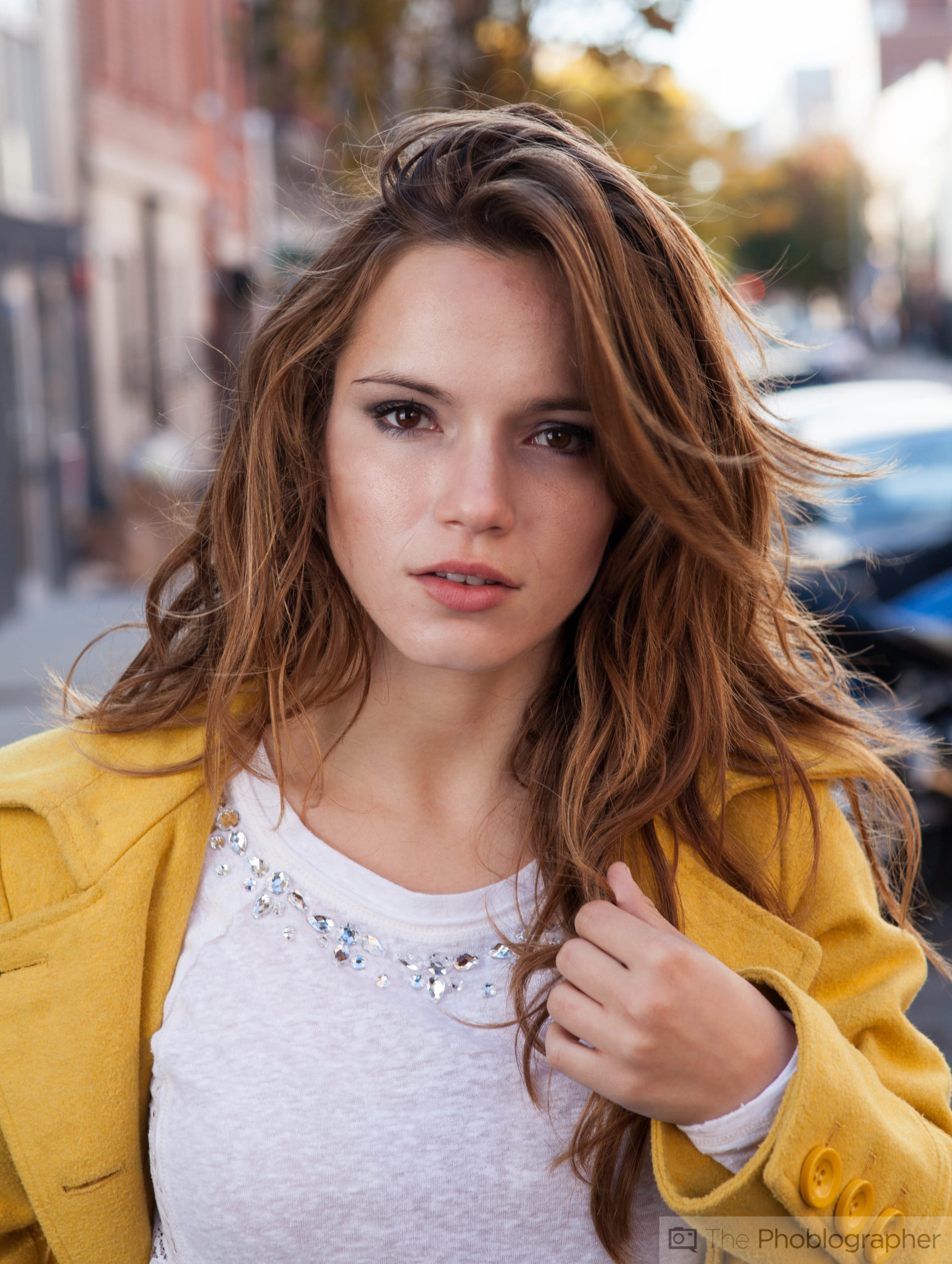
To control the light you can use the remote control that mounts into the hot shoe of your camera for TTL communication. Here you can control groups, ratios, output, TTL/Manual, first curtain or second curtain sync, channels, whether a flash head is on or off, the modelling light, groups and more. The groups can actually go as far down as F with this light. However, that isn’t accessible in this unit as the company wanted to have an emphasis on simplicity. It might come later in a firmware update.
For example, the light also has a freeze mode which enables a faster flash duration no matter what the power level will be. This sacrifices absolute color temperature efficiency, but that’s really what post-production artists are for.
Additionally, you can control whether the sync is set to optical slave/radio, the ready light will go on/off during recycling, beeping, and the modelling light being a totally free setting or proportional to the light output.
Plus, you’ve got that handy battery level.
Unlike other monolights, the modelling light will stay on at all times unless you turn it off. This can help greatly with autofocusing while shooting.
Image Quality
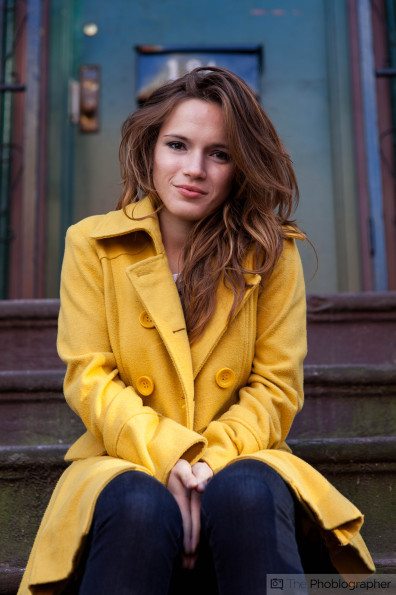
One of the things that photographers will really love about this light is not only the fact that it can be used in a TTL fashion (which eliminates the need for you to have both monolights and speedlights if your studio has them) but that we found the TTL metering to be damned good. In fact, we found it to be better than Canon’s own system. The only other system that we found to also outdo Canon is Phottix with their Odin TTL transmitters. However, those at the moment just control hot shoe flashes. This controls a full monolight with TTL metering.
During our shoot (which lasted a couple of hours), we found the metering to work flawlessly overall. This can speed up the workflow of portrait shoots by tenfold but it can also make industry wedding photographers not want to look at their speedlights or Quantum lights again. The TTL output is really just that good and we can’t emphasize it enough.
The lights can emit more or less punch if you set them accordingly on the Air control remote in tenths of increments–which isn’t possible with speedlights. This is also how Profoto sets up ratios by making (for example) A set to +1, B to -3, and so on. The ratios aren’t in the traditional 1:1 or 1:3 sense, but instead are set all the way to F–which in practice and theory can you can have something like 1:2:4:3 etc. The only limit is your own creativity.
Beyond this though, the flash output itself can also be controlled through the camera by using a exposure compensation system (which also controls flash output.) At one point or another we were able to use it during the shoot to get an image that was closer to our vision while using the TTL mode. In the past, I really just sat there and set up my lights manually to the exact way that I want them. We’re not sure if that will totally go away (in fact, we’re confident that it won’t) but the fact that the TTL system saved me from needing to do that is incredible and a major sigh of relief.
As stated earlier too, the light has a setting that allows you to shoot at a shorter flash duration and effectively stops action. Though we didn’t test it during our shoot with action, we tested it with a plain portrait session. During our demo though, Profoto demonstrated it to us and it worked even better than the Paul C Buff Einstein E640 in that the color consistency is much more manageable and the fact action is clearly able to be stopped.
The image above was used as a teaser image on our Facebook page where folks stated that the shot could have easily been achieved with a reflector. Unfortunately, it can’t be. You need TTL output in order to do it.
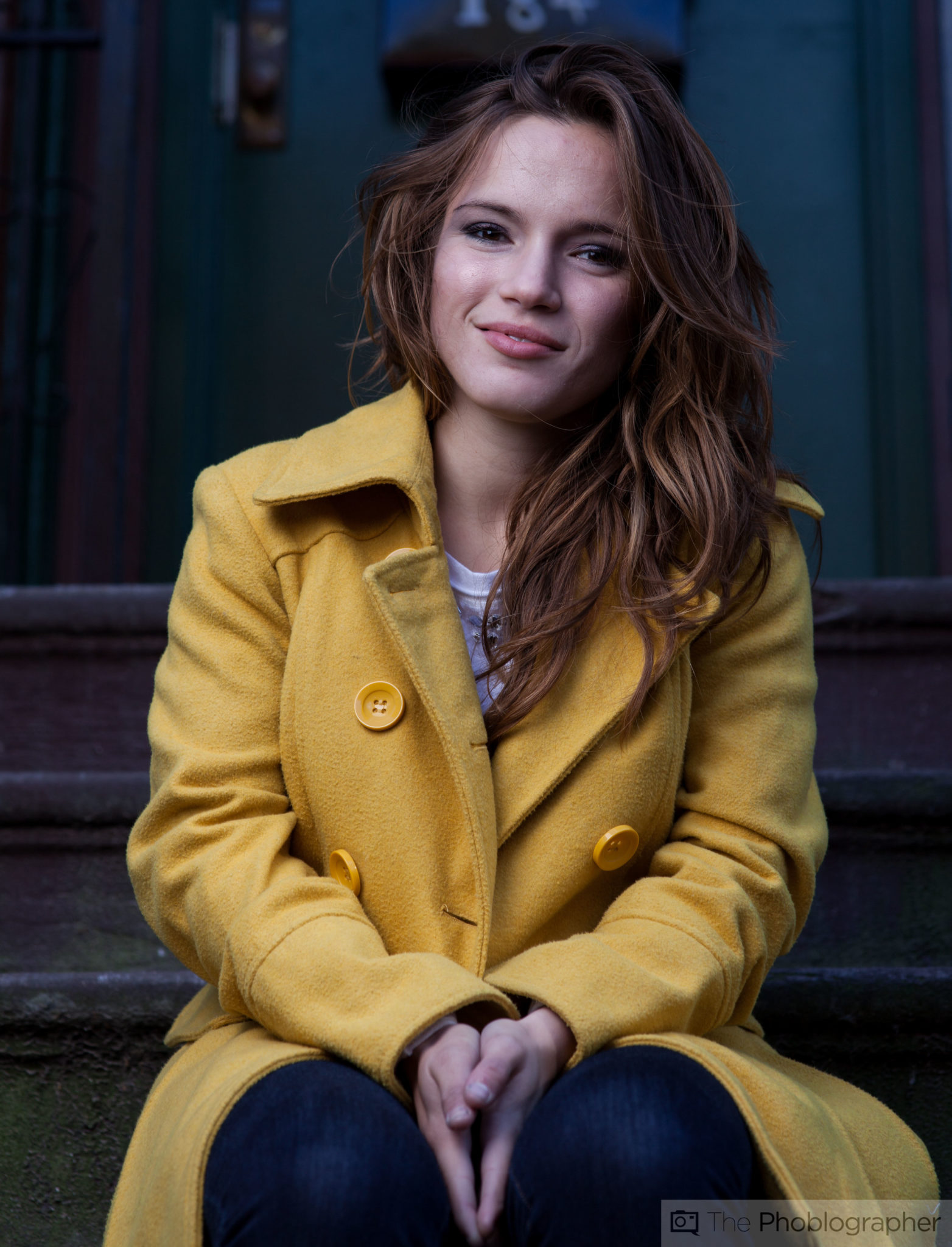
Extra Image Samples
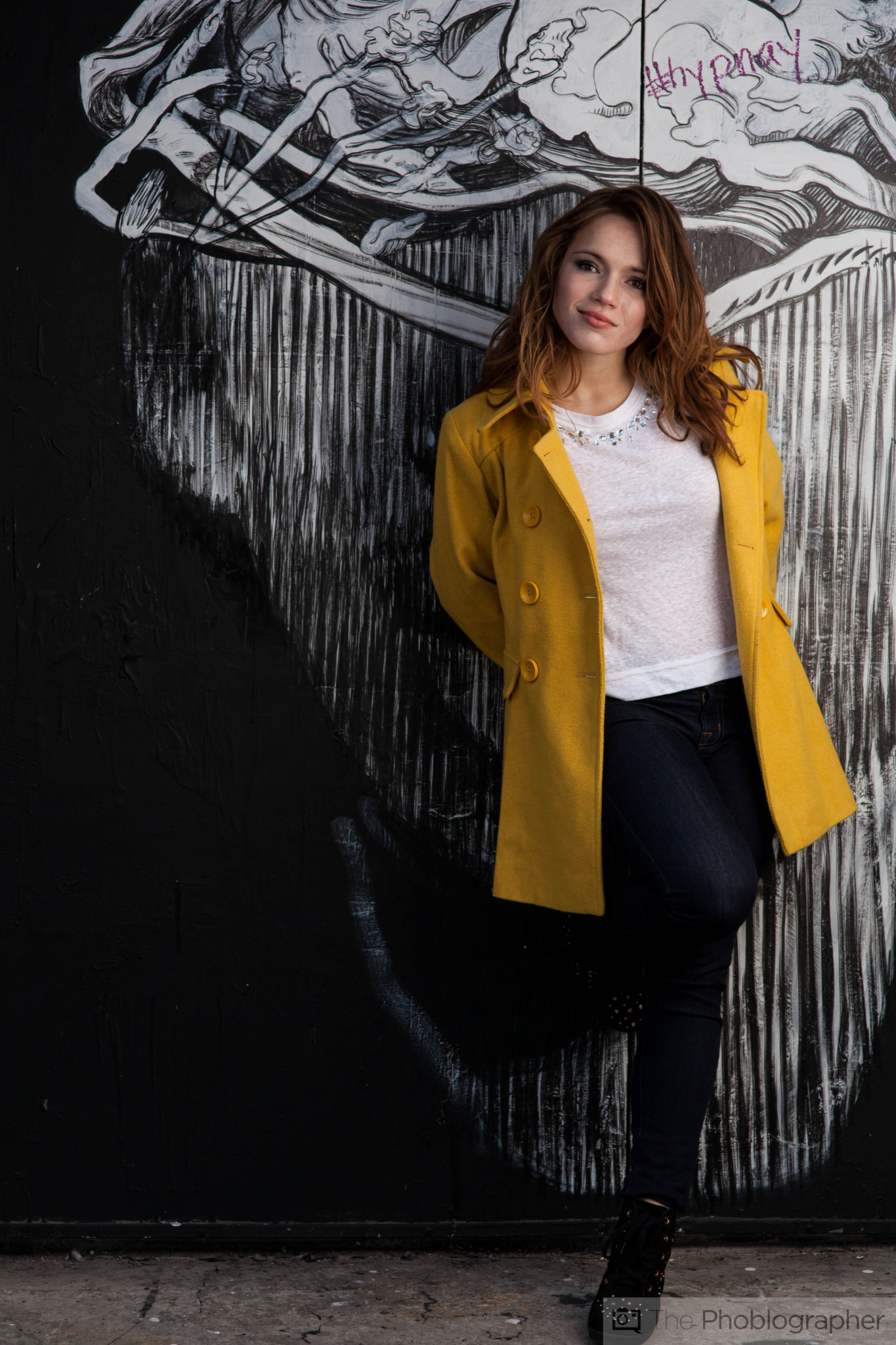
ISO 100, 1/160th at f5.6 with the light set to +0.7
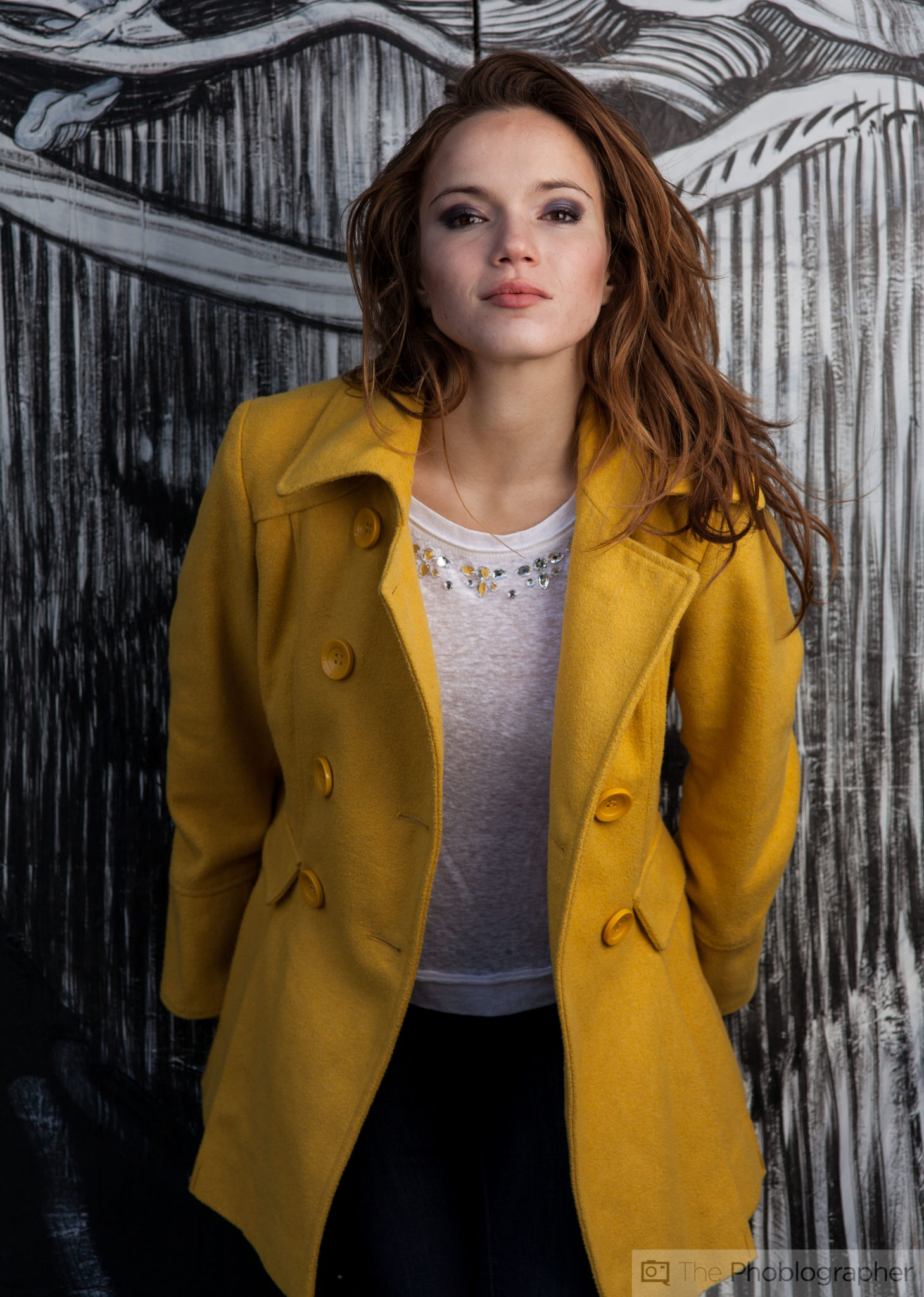
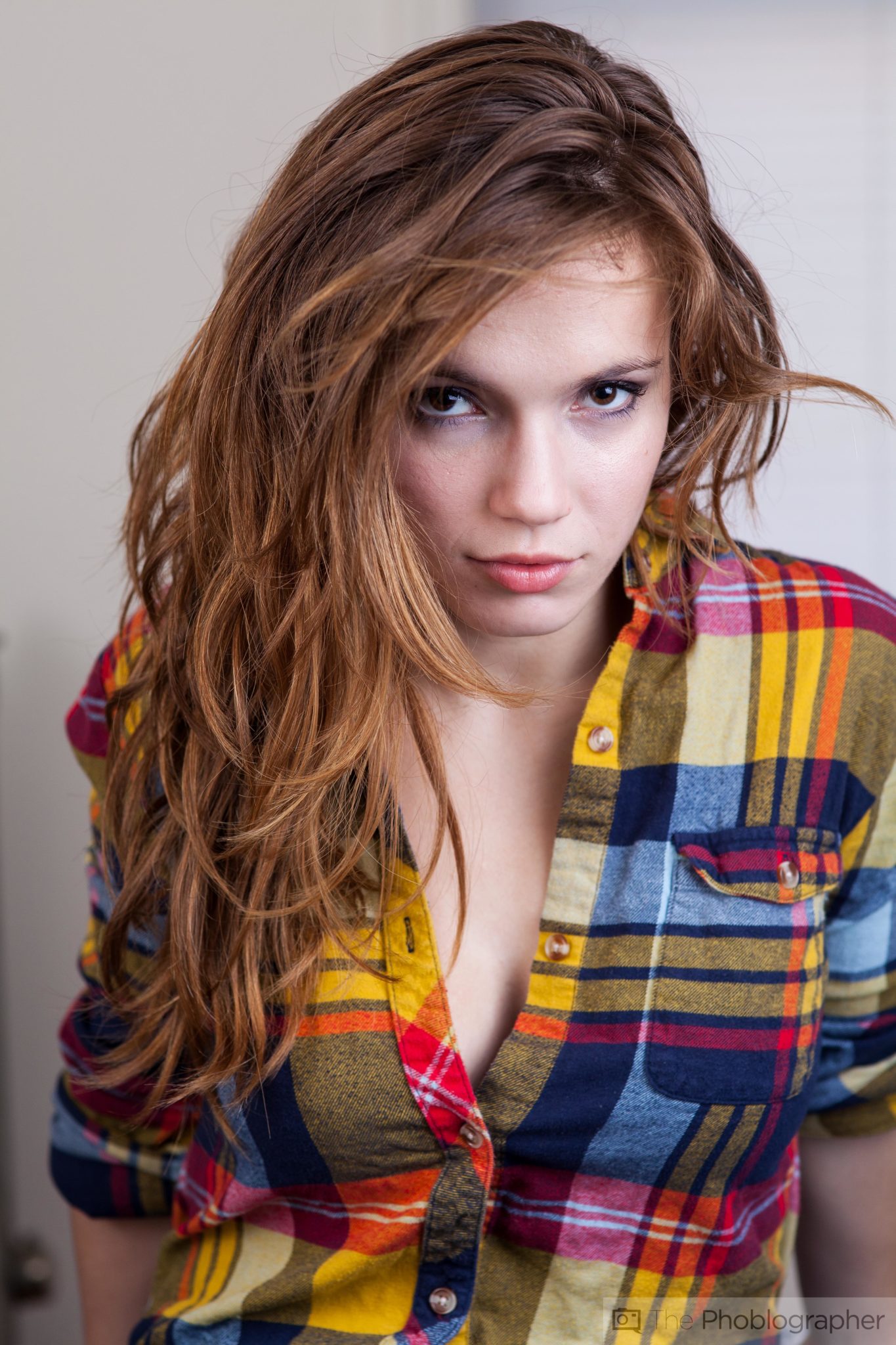
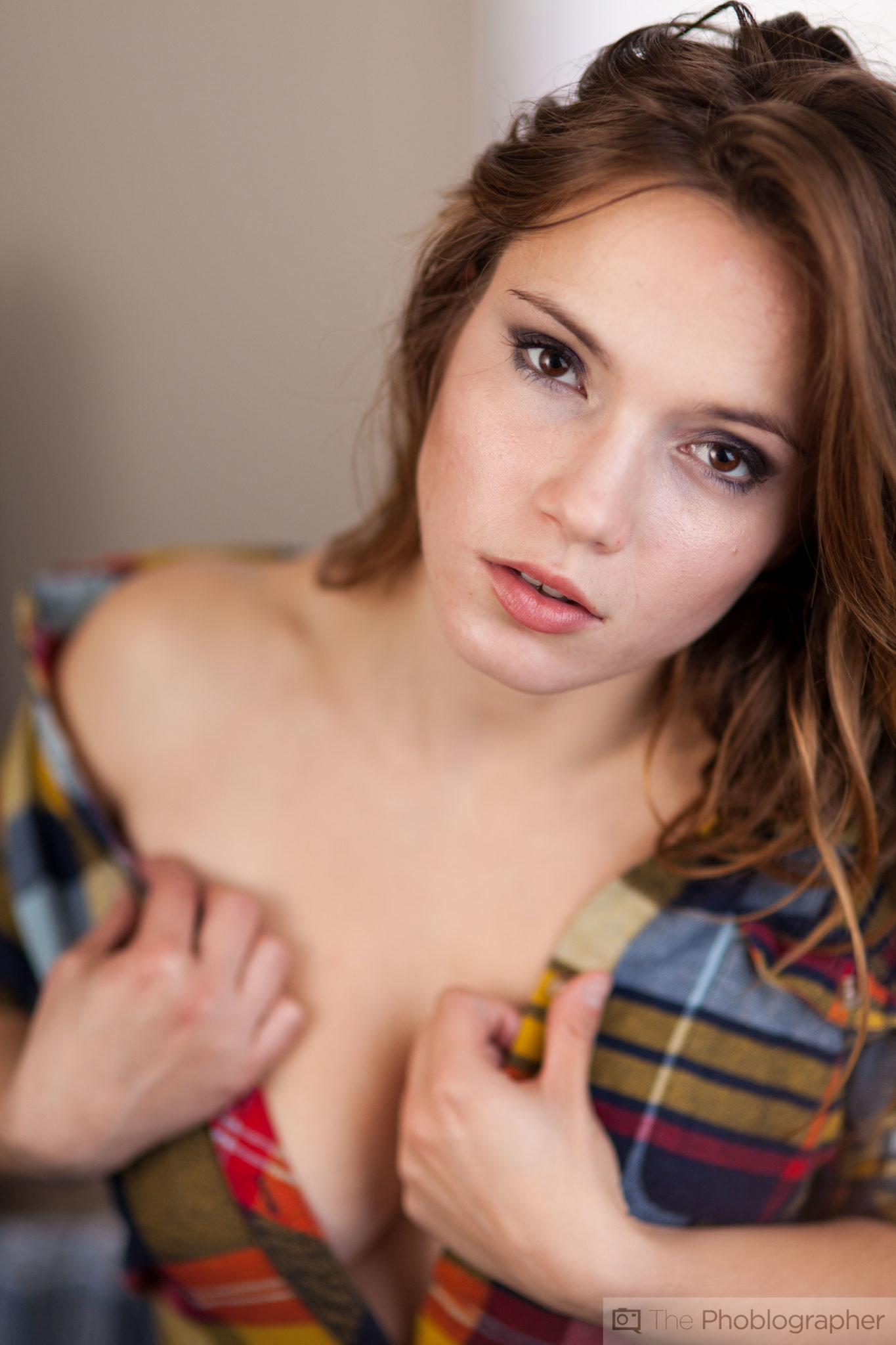
This image was shot at ISO 400, 1/100th and f1.6. Doing this with two lights at such a shutter speed was previously very tough to do, especially given the ISO setting.
First Impressions
Though we’ve only had the chance to play with the lights for a couple of hours, we’re really impressed by what they can do. We wouldn’t expect anything less from Profoto anyway. The light that we used though was a pre-production unit and didn’t have the final firmware. But either way, we didn’t have any issues with the firmware while using it.
Where we think that this light will really shake up the industry is in the wedding world. In the portrait world, there are photographers (like me) that won’t dare use flashes or speedlights beyond ISO 400. However, there is a new breed of strobists that have no issue going to ISO 1600 or even beyond that if they have to. Some halls and areas are really just that tough to light. Now though, you probably won’t need to crank your ISO up that high due to the 500 watt second output. And in turn, that means that the work that the seasoned pros can accomplish can be that much better.
We will be calling in a production unit for a full review when it launches.
Please Support The Phoblographer
We love to bring you guys the latest and greatest news and gear related stuff. However, we can’t keep doing that unless we have your continued support. If you would like to purchase any of the items mentioned, please do so by clicking our links first and then purchasing the items as we then get a small portion of the sale to help run the website.
Also, please follow us on Facebook,Google+ ,Flickr and Twitter.


